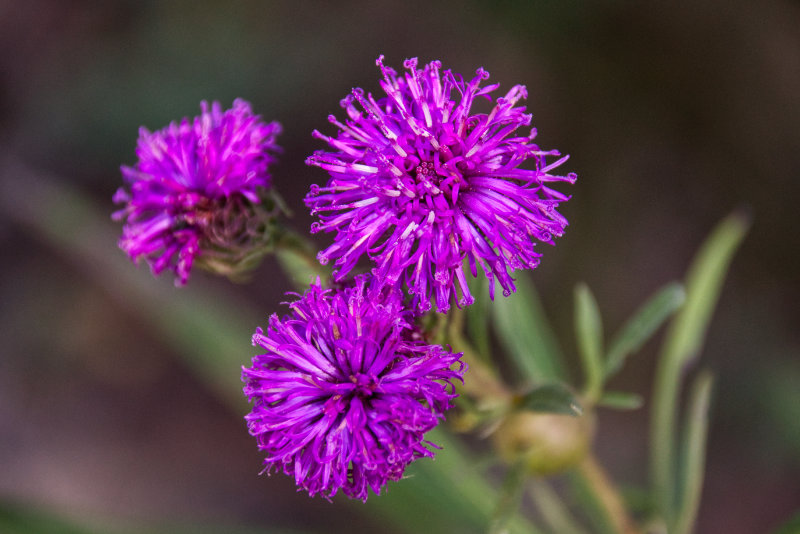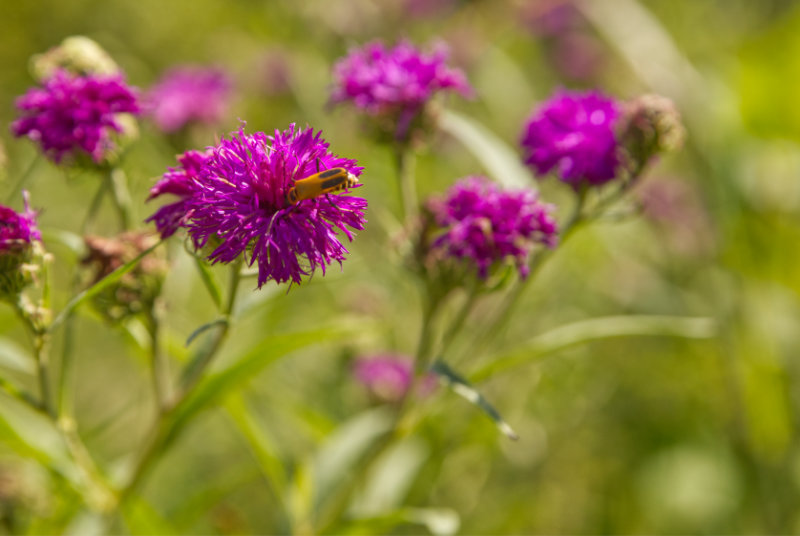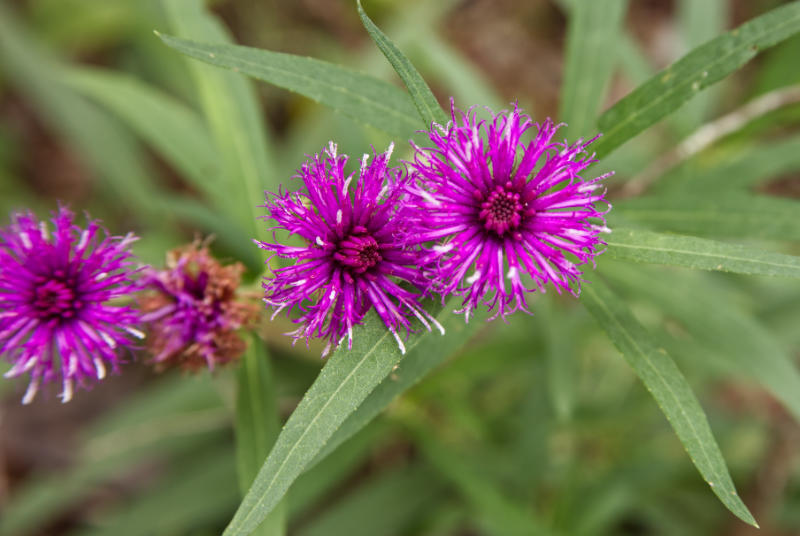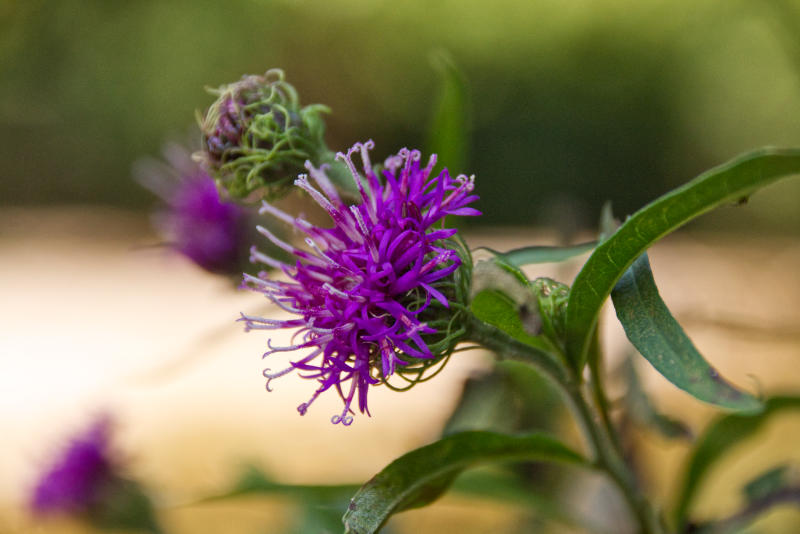
Looking for a versatile herb that’s as resilient as your favorite pair of jeans? Look no further than Ironweed, the wild wonder that’s about to take your gardening game to new heights. This lively guide will equip you with the knowledge you need to identify, harvest, and utilize this charismatic plant like a pro. Get ready to discover the secrets of Ironweed, the herbaceous superhero that’s ready to rock your world!
What is Ironweed?
Ironweed, scientifically known as Vernonia, is a genus of flowering plants that belongs to the Asteraceae family. It encompasses a diverse group of herbaceous perennials, commonly found in North America, as well as other regions across the globe. The name “Ironweed” is derived from the plant’s tough and sturdy stems, which are reminiscent of iron in their resilience.
Within the genus Vernonia, there are several species, each with its own unique characteristics. Some of the notable species include Vernonia gigantea, Vernonia altissima, and Vernonia noveboracensis. These species can vary in size, growth habit, and flower appearance, but they all share common features that make them identifiable as members of the genus.
These plants typically reach heights ranging from three to six feet, although some species can grow taller under favorable conditions. They possess long, lance-shaped leaves that are arranged alternately along the stems. The leaves often have serrated edges, adding texture to the plant’s overall appearance. When it comes to flowers, they produce clusters of small, tubular florets that are arranged in rounded or flat-topped inflorescences. The colors of the flowers can range from shades of purple and pink to white or yellow, depending on the species.
Botanically, Ironweed belongs to the Asteraceae family, which is one of the largest families of flowering plants. This family is characterized by composite flowers, meaning they are made up of many small florets packed together to form a larger, showy flower head. The Asteraceae family also includes other well-known plants such as sunflowers, daisies, and dandelions.
Distribution and Habitat of Ironweed
In the wild, Ironweed species can be found growing in various habitats, including open fields, meadows, prairies, woodlands, and along roadsides. They have a preference for full sun exposure, although some species can tolerate partial shade. It often thrives in areas with well-drained soil, but certain species can adapt to different soil types, including clay or sandy soil.
North America boasts a rich presence of Ironweed, with several species being native to the continent. In the United States, it can be found in a wide range of regions, spanning from the Northeastern states, down to the Southeast, and across the Midwest and Great Plains. Each species may have specific preferences when it comes to their distribution within these regions, as they may favor certain climates or soil conditions.
Beyond North America, Ironweed species have also been identified in other parts of the world. Some species have naturalized and become invasive in certain areas, particularly when introduced outside their native range. In regions such as Europe and Asia, the species can be found in localized habitats where they have adapted to local environmental conditions.
The ability to adapt to various habitats and climates contributes to its widespread distribution. Gardeners and enthusiasts who wish to cultivate it can replicate its preferred conditions, such as providing full sun exposure and well-drained soil, to encourage healthy growth. It is worth noting that the specific requirements may vary between different species, so it is beneficial to consult species-specific information for optimal results.

Description and Identification of Ironweed
In terms of height, these plants typically range from three to six feet in height, although some species can grow even taller under optimal conditions. Their erect and sturdy stems contribute to their overall height and provide a robust framework for the plant.
The foliage is characterized by long, lance-shaped leaves that are arranged alternately along the stems. These leaves can measure several inches in length and possess a deep green color. Serrated edges add texture to the leaves, giving them a somewhat jagged appearance.
When it comes to the flowers, they produce clusters of small, tubular florets that are arranged in rounded or flat-topped inflorescences. The colors of the flowers can vary depending on the species, ranging from shades of purple and pink to white or yellow. The vibrant blooms of Ironweed not only attract pollinators but also add a splash of color to the landscape.
Overall, the combination of tall stature, lance-shaped leaves with serrated edges, and showy clusters of tubular florets make Ironweed visually distinctive. These physical characteristics contribute to the plant’s allure and make it a notable addition to gardens or natural landscapes.
Different species and variations of Ironweed
The Ironweed genus, Vernonia, encompasses several species and variations that contribute to the diverse world of this remarkable plant. Understanding the different species and variations of Ironweed is crucial for recognizing their unique characteristics and harnessing their specific benefits.
One notable species is Vernonia gigantea, commonly known as Tall Ironweed. As the name suggests, this species can reach impressive heights, often surpassing six feet. Tall Ironweed features long, lance-shaped leaves with serrated edges and clusters of vibrant purple flowers. It thrives in moist areas, such as meadows and wetlands, and is known for its ability to attract butterflies and bees.
Another species, Vernonia altissima, is referred to as Tall Ironweed as well but is sometimes distinguished as Upland Ironweed. It shares similarities with Vernonia gigantea in terms of height, leaf shape, and flower color. However, Upland Ironweed typically grows in drier upland habitats, including prairies and open fields. Its adaptability to different soil types, including clay, makes it a versatile addition to gardens.
Vernonia noveboracensis, commonly known as New York Ironweed, is a species often found in the northeastern regions of North America. It exhibits similar growth characteristics as the other Ironweed species, with tall stems, lance-shaped leaves, and attractive purple flowers. New York Ironweed thrives in wet habitats such as marshes, wet meadows, and along stream banks.
Other Ironweed species and variations can be found across different regions, each with its own unique attributes and distribution patterns. Some species may have more limited distributions or prefer specific ecological niches.

Medicinal Properties of Ironweed

Historical Uses of Ironweed in Traditional Medicine
In traditional medicine, Ironweed was often employed as a remedy for ailments related to digestion and gastrointestinal health. It was believed to possess properties that could ease digestive discomfort, such as bloating, cramps, and indigestion. Additionally, Ironweed was used to stimulate appetite and promote healthy digestion.
Ironweed also found its place in addressing respiratory issues. It was often employed to alleviate symptoms associated with respiratory conditions such as coughs, bronchitis, and congestion. The plant was thought to possess expectorant properties, helping to loosen and expel phlegm from the lungs.
Additionally, Ironweed was valued for its potential as an anti-inflammatory agent. It was used externally to help reduce inflammation and soothe various skin conditions, including wounds, burns, and insect bites. The plant was often prepared as a poultice or infused into oils for topical application.
Ironweed’s historical use extends beyond digestive, respiratory, and inflammatory concerns. It was also utilized for its potential diuretic properties, aiding in the elimination of excess fluids from the body. Furthermore, Ironweed was employed as a general tonic to promote overall well-being and vitality.
While modern scientific research is ongoing, the historical medicinal uses of Ironweed shed light on its potential therapeutic benefits. It is important to note that the use of Ironweed for medicinal purposes should be approached with caution and under the guidance of a healthcare professional.
Key Medicinal Compounds
Ironweed contains several key medicinal compounds that contribute to its therapeutic properties. These compounds are distributed throughout different parts of the plant, each offering unique benefits.
One of the prominent compounds found in Ironweed is sesquiterpene lactones. These compounds are primarily present in the leaves and flowers of the plant. Sesquiterpene lactones have been recognized for their anti-inflammatory, analgesic, and immune-modulating properties. They are believed to contribute to the plant’s traditional use in reducing inflammation and alleviating pain.
Flavonoids, another group of beneficial compounds, are abundant in Ironweed. These compounds are widely distributed throughout the plant, including in the leaves, flowers, and stems. Flavonoids possess antioxidant properties and have been associated with various health benefits, such as supporting cardiovascular health and reducing the risk of chronic diseases.
Ironweed also contains phenolic compounds, which are responsible for its astringent and antimicrobial properties. These compounds are predominantly found in the aerial parts of the plant, including the leaves and flowers. Phenolic compounds contribute to the plant’s traditional use in wound healing and as an antimicrobial agent.
Moreover, Ironweed contains tannins, which are polyphenolic compounds found in the leaves, stems, and roots. Tannins are known for their astringent properties, making them useful in traditional medicine for treating conditions like diarrhea and inflammation of the gastrointestinal tract.
It’s important to note that the concentrations and specific combinations of these compounds may vary among different Ironweed species. Furthermore, the effectiveness and safety of these compounds should be considered within the context of scientific research and under the guidance of a healthcare professional.

Ironweed’s Potential Health Benefits
Ironweed offers several potential health benefits due to its unique combination of compounds. These benefits are attributed to various parts of the plant, each contributing its therapeutic properties.
The leaves and flowers of Ironweed contain compounds such as sesquiterpene lactones, which exhibit anti-inflammatory and analgesic properties. These compounds have the potential to alleviate inflammation-related conditions such as arthritis, joint pain, and muscle soreness. They may also provide relief from discomfort and contribute to overall pain management.
Flavonoids, abundant in the leaves, flowers, and stems of Ironweed, offer antioxidant properties. Antioxidants help protect the body against oxidative stress, which is associated with chronic diseases and aging. By neutralizing harmful free radicals, flavonoids contribute to overall cellular health and support the body’s defense against various ailments.
Ironweed’s phenolic compounds, found primarily in the leaves and flowers, contribute to its astringent and antimicrobial properties. Astringents help tighten and tone tissues, making them beneficial in conditions such as diarrhea and wound healing. The antimicrobial activity of these compounds may aid in combatting certain types of infections and promoting overall immune health.
Tannins, present in the leaves, stems, and roots of Ironweed, provide astringent effects as well. They can help soothe and protect the digestive system, potentially aiding in cases of diarrhea and inflammation of the gastrointestinal tract. Additionally, tannins may contribute to wound healing by promoting tissue repair and providing antimicrobial activity.
It’s important to note that while Ironweed shows potential health benefits, further scientific research is needed to fully understand and validate its effects. As with any herbal remedy, it’s recommended to consult with a healthcare professional before using Ironweed for medicinal purposes, especially if you have any underlying health conditions or are taking medications.
Conclusion
Ironweed, with its diverse species and rich history, holds significant potential for medicinal applications. From its traditional use in addressing digestive and respiratory issues to its anti-inflammatory and antimicrobial properties, Ironweed offers a range of health benefits. The plant’s key compounds, found in different parts of the plant such as the leaves, flowers, and stems, contribute to its therapeutic properties. While further scientific research is needed to fully understand and validate these benefits, Ironweed remains a fascinating plant worth exploring for its potential contributions to natural remedies and overall well-being.
Be sure and check out our list of articles for more great info on sustainable living, as well as edible and medicinal plants.
FAQs:
Q: Does ironweed have medicinal properties?
A: Yes, it possesses medicinal properties. It has a rich history in traditional medicine and is believed to offer various therapeutic benefits such as anti-inflammatory, analgesic, and antimicrobial effects.
Q: Is ironweed toxic to humans?
A: It is generally considered non-toxic to humans. However, it is always important to exercise caution and consult reliable sources or healthcare professionals before using any plant for medicinal purposes.
Q: Is tall ironweed poisonous?
A: Tall ironweed (Vernonia gigantea) is not known to be toxic or poisonous to humans. However, it is always advisable to exercise caution and avoid consumption in large quantities without proper guidance.
Q: What is the difference between tall ironweed and New York Ironweed?
A: While both tall (Vernonia gigantea) and New York ironweed (Vernonia noveboracensis) share similarities in appearance, there are some differences. Tall ironweed is typically found in moist areas, while New York ironweed is commonly found in wet habitats. Additionally, they may have slight variations in flower color and distribution range.
Q: Why is ironweed called ironweed?
A: It gets its name from its strong and robust stems, which are sturdy and iron-like in their strength and durability. This name reflects the plant’s resilience and hardiness.
Q: What is Baldwin’s ironweed good for?
A: Baldwin’s ironweed (Vernonia baldwinii) is known for its potential use in supporting gastrointestinal health. It has been traditionally used for digestive issues and may offer benefits such as alleviating digestive discomfort and stimulating appetite.
Q: Do monarchs eat ironweed?
A: Yes, monarch butterflies are known to feed on it. The nectar-rich flowers provide a valuable food source for monarchs and other pollinators, making it an important plant for supporting their populations.
Q: What are some fun facts about ironweed?
A: This is a fascinating plant with a few fun facts. For example, it is a favorite of pollinators such as butterflies and bees, adding beauty to gardens and natural landscapes. Additionally, it is known for its hardiness, with some species able to thrive in challenging conditions such as poor soil and drought.
Q: Do deer eat ironweed?
A: While deer may browse on it occasionally, it is generally considered less palatable to them compared to other plant options. However, deer feeding habits can vary depending on factors such as food availability and local conditions.